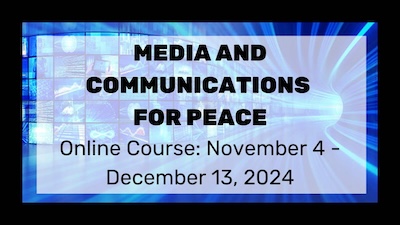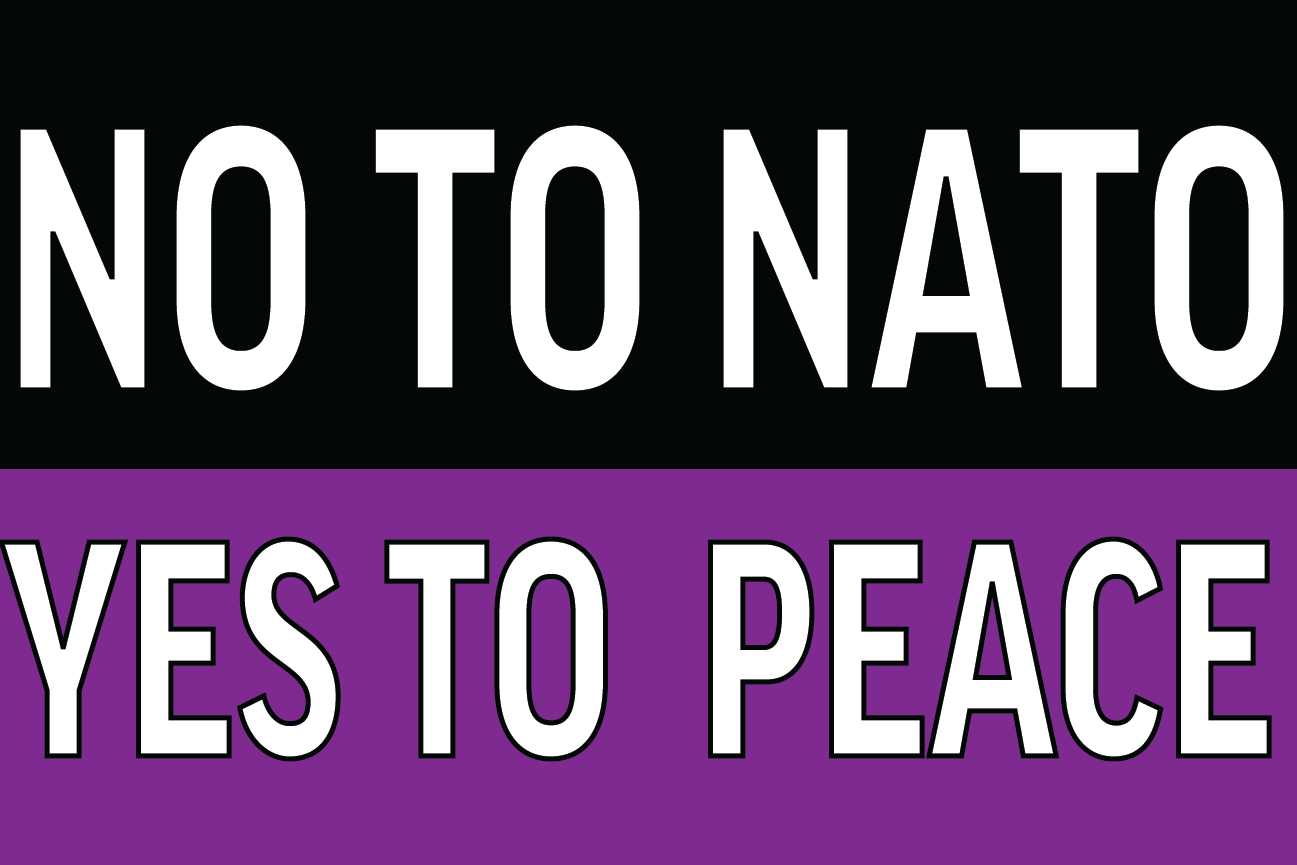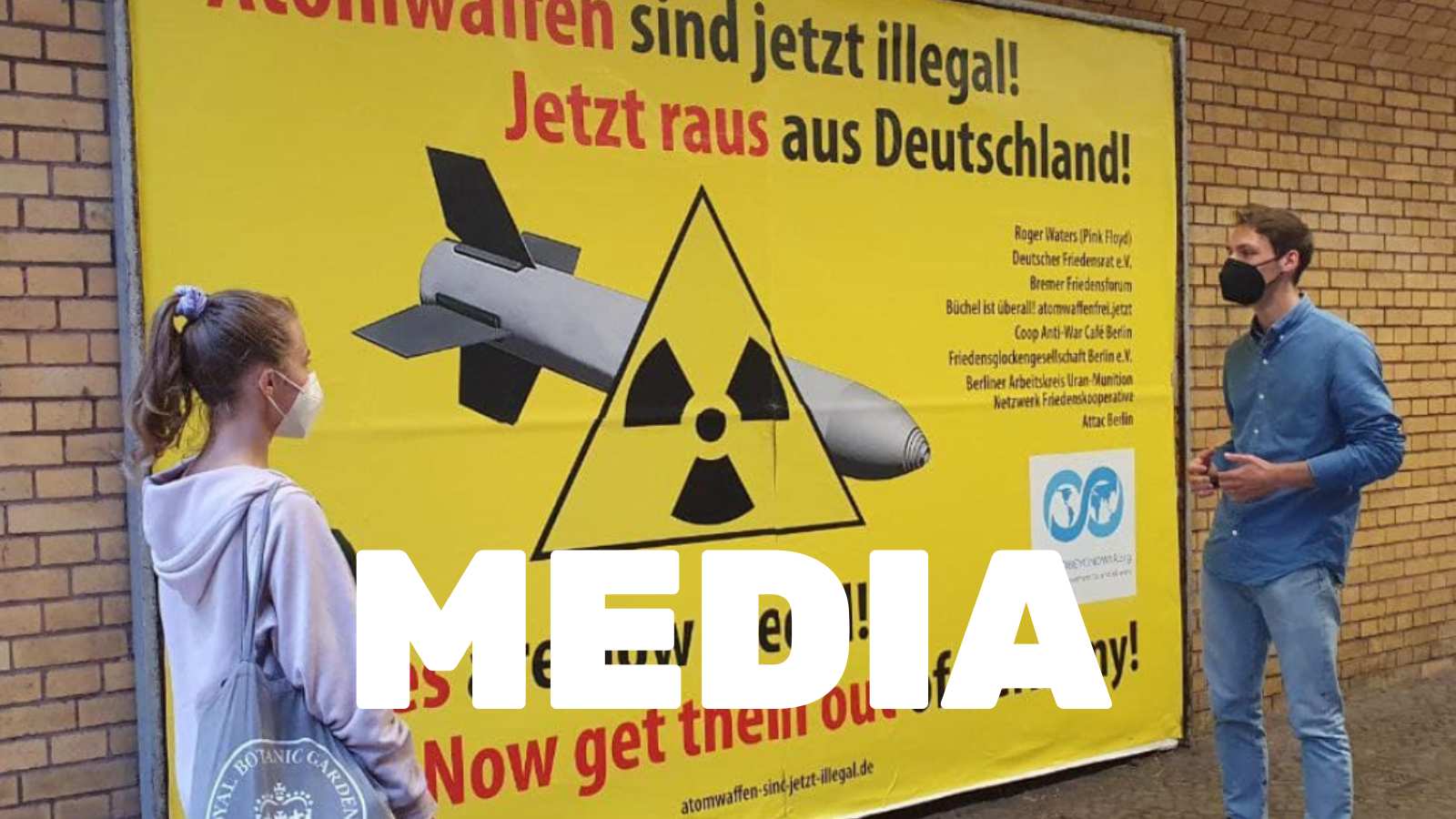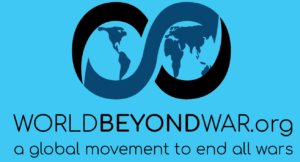By Ludo De Brabander, July 6, 2024
Presented at https://nonatoyespeace.org
The war in Ukraine has brought nuclear weapons back into the spotlight. Unfortunately, a nuclear confrontation is even more likely than during the cold war.
In my contribution I would like to address NATO’s nuclear policy and the concept of nuclear sharing in which US nuclear weapons stored at military bases of 5 European NATO countries play a central role.
Only gradually, nuclear weapons became a central part of NATO’s military post-cold war strategy. In NATO’s earliest years, nuclear weapons were in fact not even mentioned in the alliance’s strategic concepts even when US nuclear weapons in Europe peaked at more than 7000 in the 70s. Nuclear arms were considered a responsibility of NATO’s nuclear powers. Only in 2010 at the NATO Summit in Lissabon, NATO accepted a strategic concept proclaiming for the first time to be a ‘nuclear alliance’.
The collectivization of nuclear responsibility
From the 1950s, the US began to deploy nuclear weapons in other NATO member states, giving them a role in the planning and preparation of nuclear war with the establishment of the Nuclear Planning Group in 1966. In the years that followed, all countries, new members included, except France became involved in the nuclear deterrent policy, which was increasingly defined as a form of alliance solidarity. The reason? International support among the population for nuclear disarmament grew. In the 80’s many hundreds of thousands demonstrated in European and US-cities opposing new deployments of nuclear arms. The strengthening of humanitarian and anti-nuclear norms during and after the Cold War played a key role in pushing NATO to adapt. This led to the collectivization of political responsibility for nuclear weapons.
First, the nuclearization of NATO as an organizational identity allowed pro-nuclear actors to justify costly nuclear modernization programs and nuclear deployments as contributions to alliance “solidarity” and “cohesion”.
Second, this nuclearization of NATO undercut the potential for intra-alliance resistance to nuclear arms. Calls for nuclear disarmament could thus be seen as anti-NATO.
Nuclear Sharing
Nuclear sharing became a core component of NATO’s strategy. Of the three nuclear powers in NATO (France, the United Kingdom and the United States), only the United States has nuclear arms in other member states: Belgium, Germany, Italy, the Netherlands and Turkey. Once there have been also US nuclear arms in Canada (1950-1984), Greece (until 2001) and the UK (until 1992, but new deployments are planned).
Currently, the US has an estimated 100 tactical B61 gravity bombs deployed in Europe. They have to be mounted into (not in Turkey) dual capable aircrafts (DCA) in war time. Each year, the nuclear sharing is exercised in Steadfast Noon maneuvers that until recently have been kept secret.
There are several legal and political problems with NATO’s nuclear policies.
First, the concept of nuclear sharing can be considered as a transfer of nuclear arms to non-nuclear states which would be in breach with art 1 and 2 of the non-proliferation treaty (NPT) of 1970. The NPT prohibits the direct or indirect transfer or control of nuclear weapons to non-nuclear states. This would certainly be the case once the fighter jets of non-nuclear-weapon states take to the skies and the Permessive Action Links (PAL) are activated that allow the nuclear weapon to be used during a military operation or an all open war. But according to the US the NPT is not valid anymore in war time (argument: the purpose of the NPT to avoid war failed). These bombs will soon be replaced by new B61-12 bombs equipped with an electronic tail kit that can guide the bomb to its target. They have also lower yield options.
The mixture of both, precision and lower yield options could be seen by war planners as more useable weapons. The new B61-12 could increase the danger of a war with nuclear weapons eroding the concept of deterrence.
A second problem is that there is no transparency whatsoever around the presence of US nuclear weapons at European military bases. It makes democratic debates and decision-makings virtually impossible which is probably no coincidence. Traditionally, according to several surveys a majority of the population in most NATO countries is in favor of a ban on nuclear weapons. Even if it is not clear if the war in Ukraine changed this public mood, the secrecy surrounding nuclear sharing is unacceptable in a democracy.
A third problem is NATO’s aggressive stance towards the nuclear ban treaty (TPNW). At its latest Summit in Vilnius, NATO reiterated that the Non-Proliferation treaty (NPT) remains the essential bulwark against the spread of nuclear weapons, claiming its strongest committment to the full implementation of the NPT across its three pillars, including Article VI. On the other hand, NATO member states have been boycotting the negotiations on a treaty to ban nuclear arms (TPNW) although it can be seen as an implementation of Article 6 of the Non-Proliferation Treaty (NPT) in which the parties commit to negotiate a treaty for complete nuclear disarmament.
NATO has been waging disinformation campaigns with the false claim that the Ban Treaty undermines the nuclear disarmament regime and that it lacks control and verification mechanisms although article 3 of the TPNW clearly states that non-nuclear weapon states shall “maintain its International Atomic Energy Agency safeguards obligations” at a minimum.
NATO sees the TPNW as a threat to its political unity over the nuclear strategy. That’s the reason for the strong dismissive language in the Vilnius declaration, calling the TPNW in “opposition”, “inconsistent” and “incompatible with the Alliance’s nuclear deterrence policy” and at “odds with the existing non-proliferation and disarmament architecture” causing “risks undermining the NPT.”
In any case, the reactions and declarations of the US and NATO are expressions of concerns about the general impact of the TPNW and the wide support it receives endangering its political cohesion. Therefore, the Vilnius declaration emphasizes that talks and negotiations on disarmement should be done with “NATO as a platform”. In other words, NATO members are not supposed to initiate or participate in disarmament initiatives outside NATO or without the leadership of the US.
Fourth, NATO has always been ambiguous in its nuclear policy. It is paying lip service to the NPT while its nuclear powers continue to pour billions into replacing or upgrading their nuclear arsenals. NATO’ statements are full of contradictions. According to NATO: “Nuclear weapons are a core component of NATO’s overall capabilities for deterrence and defense, alongside conventional and missile defense forces. NATO is committed to arms control, disarmament and non-proliferation, but as long as nuclear weapons exist, it will remain a nuclear alliance.” (quote from Deterrence and Defence Posture Review, 2012)
The language NATO used in the Vilnius declaration is not such as to invite Russia or China to disarm, blaming these countries for the erosion of the disarmament regime while it remains silent over its own role in it, like the deployment of a missile shield after the US pulled out of the ABM, the US withdrawal of the INF and Open Skies treaty and the Iran deal, the future delivery of nuclear submarines to Australia (AUKUS)…
How should we free ourselves from the nuclear danger?
The challenge for the peace movement is to convince other social movements of the collective importance of nuclear disarmament. Like climate change, nuclear weapons are a planetary threat. The climate and the peace movement are both fighting to preserve the planet. It is a common struggle for which they need to join forces.
A wide social and political movement against the danger of nuclear war should put forward a number of common demands:
1. Full transparency must be provided on nuclear weapons in Europe to enable democratic debate and decision-making.
2. We do not need lip service to nuclear disarmament, but concrete disarmament initiatives leading to negotiations to avert the growing nuclear danger in Europe. These can only be successful if there is a ceasefire in Ukraine, international tensions are reduced and mutual security interests are taken into account.
3. New agreements are needed to avoid new nuclear weapon deployments in Europe on all sides. Once this is realised, the withdrawal of nuclear weapons from the territories of nuclear sharing countries can help shape conditions and commitments for a nuclear weapon-free zone (NWFZ) in Western, Central, and Eastern Europe. Is this possible? Of course. It is a matter of political will to negotiate procedures, a timeframe and verification mechanisms for a NWFZ.
4. a legal ban on nuclear weapons and accession to the TPNW. How difficult politically this seems to be, I believe there is always an opportunity to break the nuclear cohesion of NATO. Under pressure from the USA and NATO, the Belgian government was reluctant to recognise the Ban Treaty as an important instrument for nuclear disarmament. Finally, the government gave in to pressure from the peace movement and participated in both Meetings of State Parties as an observer. So did Germany and the Netherlands, two other NATO countries involved in nuclear sharing.
5. Last but not least, we must disband NATO to achieve a nuclear-free world. Ultimately the true abbreviation of this militaristic war organisation is Nuclear Armed Terrorist Organisation.










One Response
And the rest of the world not???